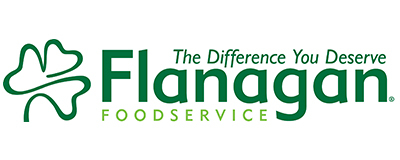
We collect basic website visitor information on this website and store it in cookies. We also utilize Google Analytics to track page view information to assist us in improving our website.
Dietary sodium and gluten are hot topics these days. I'm often asked nutrition questions (outside of business hours...) about both of them. We are dealing with excess sodium in our food supply added mainly due to the manufacturing process and foodservice recipes. Some people need to avoid gluten (a protein found in wheat, rye, triticale and barley) in the food they eat. Too much of either (sodium or gluten) can lead to undesirable health implications.
The first part of this article will address dietary sodium including the health implications of consuming too much, where it is coming from, and helpful menu planning tips. The last part of this article will identify what Celiac disease is, why it is essential to follow a gluten-free diet if diagnosed with the disease and basic gluten-free alternatives.
The average adult Canadian consumes in excess of 3,100 mg of sodium a day.¹ This is twice the recommended amount needed for proper body functions such as maintaining the right balance of fluids and transmitting nerve impulses. The DRI (Dietary Reference Intake) established by the Institute of Medicine, daily Adequate Intake (AI) for sodium for adults is between 1,200 mg and 1,500 mg depending on age. Research shows that lowering sodium consumption to optimal levels could reduce the incidence of stroke and heart disease by as much as 30%.²
The World Health Organization estimates hypertension to be the leading risk factor for death in the world.3 This is partly because hypertension is common, occurring in nearly one quarter of the world's adult population and partly because the management of hypertension is sub-optimal.
Health Canada has created a multi-stakeholder working group on sodium reduction. Their focus is to develop and oversee the implementation of a strategy to lower the sodium content of Canadians' diets over the next decade.³
The Canadian Community Health Survey (CCHS) 2.2 Data from the 2004 nutrition focus was used to determine contribution of foods including the sodium intake of Canadians. The percentage of total sodium consumed from major grouped-food sources by all respondents was reported the following way: Breads 14%; Processed Meats 9%; Red Meats and Poultry 8%; Vegetables, Tomatoes and Vegetable Juice 8%; Soups 7%; Pasta dishes 6%; Burgers & Hot Dogs 5%; Milk Products 4%; Gravies and sauces 4%; Pizza 3%; Breakfast Cereals 3%; Potatoes 3%, Cheese 3% Fish and Shellfish 2%, Eggs, Rice Dishes 2%, Potato Chips and salty snacks 2% and other 17%.
Look for hidden sodium in commercial baked goods, highly processed meats and poultry, packaged side dishes, canned vegetables and soups. Read the nutrition label (the Daily Value for sodium on the label is based on 2,400 mg/day—the Upper Limit). Avoid salty snack foods and try to make items from scratch when possible. Fill up on at least 5 servings/day of fresh (or minimally processed) fruits and vegetables. Dr. Norm Campbell of Blood Pressure Canada, explains, "It is estimated that almost one in three Canadians who have hypertension would have normal blood pressure if there was less sodium in our food."
Although statistics are not readily available, it is estimated that 1 in 133 persons in Canada are affected by Celiac Disease. It may be as great as 1% of the population with proper diagnostic procedures. In general, the symptoms of untreated celiac disease indicate the presence of malabsorption due to the damaged small intestine. This results in the inability of the body to absorb nutrients: protein, fat, carbohydrates, vitamins and minerals, which are necessary for good health. That is why it is essential for proper diagnostic tests (blood work and intestinal biopsy) from a trained medical professional to identify the disease.
At present there is no cure, but Celiac Disease is readily treated by following the gluten-free diet. A Celiac must read the list of ingredients on all labels. It is the gluten in the flour that helps bread and other baked goods bind and prevents crumbling. This feature has made gluten widely used in the production of many processed and packaged foods. Hidden sources of gluten include HVP/HPP (hydrolyzed vegetable/plant protein); malt; spelt; kamut; and certain drug products.
The proposed amendments to the Canadian Labelling Regulations of Allergens affecting the declaration of gluten sources will impact the industry as well as the consumer. Currently, the definition of what is considered to be gluten sources is under scientific review and will be defined at the point of implementation of the new regulations. It suggests that the gluten source will need to be declared when a food contains gluten protein or modified gluten protein from barley, oats, rye, triticale or wheat, including kamut or spelt.
There is an increasing focus on gluten-free products and a rise in non-wheat baked goods. Taste, texture and palatability are challenges the manufacturer and/or chef need to consider when creating gluten-free food items. The main flour replacements include corn and rice. More work is being done with pulse (beans, peas, lentils and chickpeas) flours to replace gluten flours. And in terms of new product designs, gluten-free products on the shelves are supplied by both specialist and mainstream manufacturers.
Both hot topics of sodium and gluten offer opportunity for the food industry. The move is on to reduce the amount of sodium in the Canadian food supply, therefore, product developers, chefs and cooks can work on creating lower sodium recipes with flavourful herbs and spices which will address the excess sodium in processed and convenience foods. As for gluten-free products, this presents the occasion for experimenting with a variety of ingredients, including novel gluten-free flours to create more delicious, healthy alternatives for people with Celiac Disease
By Jane Drummer, RD
On the web:
www.sodium101.ca
www.celiac.ca
¹ Statistics Canada, Garriguet D. Sodium consumption at all ages. Health Reports, 2007:18:47-52
² The changing face of heart disease and stroke in Canada 2000, Wielgosz et al, 1999. Ottawa., Heart and Stroke Foundation of Canada
³ World Health Organization. The World Health Report 2002. Geneva, Switzerland:WHO; 2002

